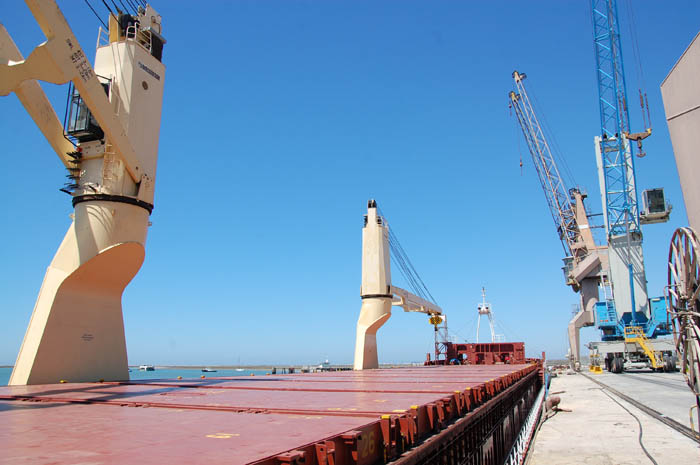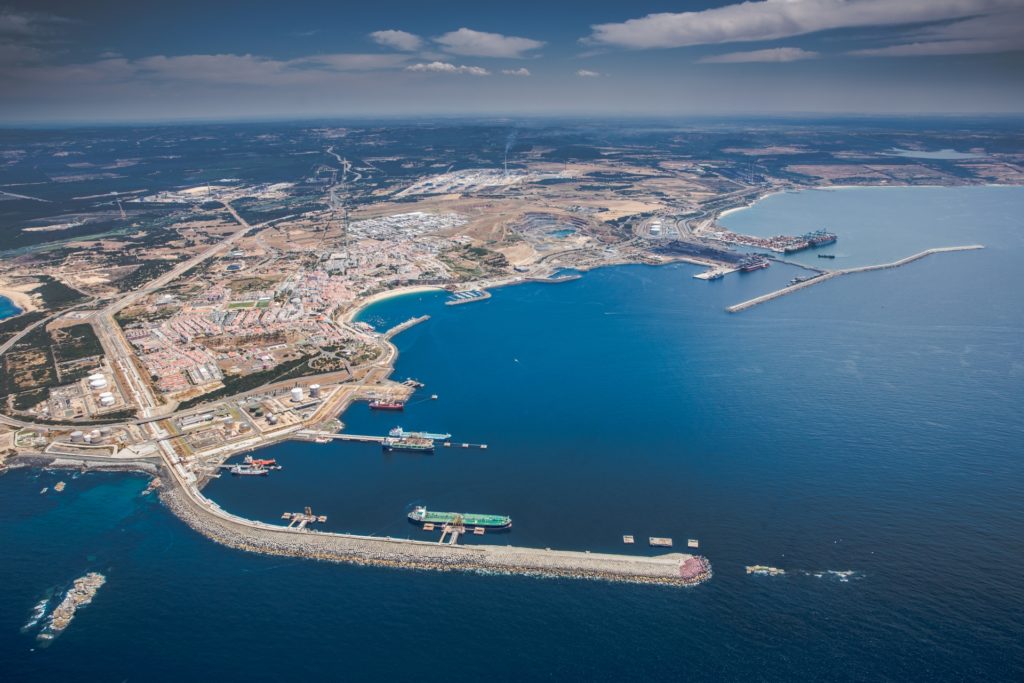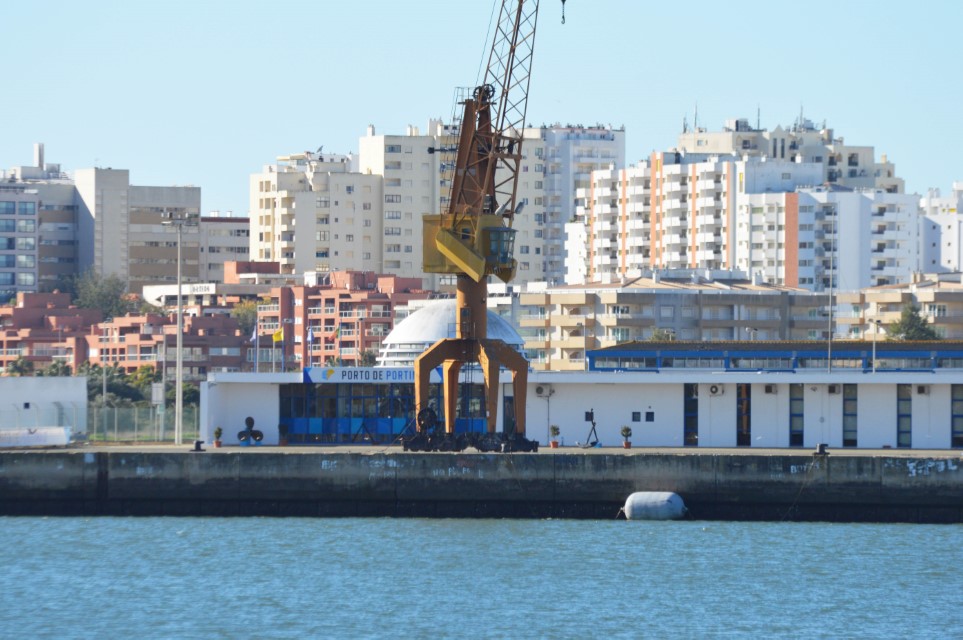The Port of Sines grew 2,5% in 2018 in the container segment, compared to 2017, reaching its maximum share of 58,6%. Also the port of Faro registered a positive performance in the volume of cargo handled, while in Portimão there was a positive variation in the number of stopovers of 26,8%.
According to data from the Mobility and Transport Authority, mainland ports recorded, in 2018, a total cargo volume of almost 93 million tons, a drop of -3,5% compared to the previous year, which reflects, in volume, -3,3 million tons.
This performance was determined by the reductions in imports of Crude Oil and Coal of -1,63 and -1,25 million tons, respectively, and in exports of Petroleum Products (-1,38 million tons).
With regard to the global volume of cargo handled, only the ports of Aveiro and Faro registered positive performances. The remaining ports registered a globally lower movement than 2017, with highlights to Sines (-2 million tons), Lisbon (-913,4 thousand tons) and Setúbal (-443 thousand tons).
From the perspective of the different markets, it appears that the negative variations most strongly conditioning the performance of the port system are recorded in Sines, in the whole of Crude Oil, Coal and Petroleum Products, a value corresponding to -50,8% of the total 'lost' cargo by the set of markets.
On the positive side, the Containerized Cargo markets in Sines and Leixões, with +1,15 million tons and +498 thousand tons, respectively, Fractional Cargo in Aveiro, with +315,9 thousand tons, and Other Solid Bulk in Leixões, with +265,3 thousand tons.

Although, as a whole, 2018 suffered a decrease compared to 2017, it should be noted that the month of December, alone, recorded an increase of +7,7%, due to the performances recorded in Coal, Crude Oil and Containerized Cargo with, respectively, +249,4 thousand tons, +105,2 thousand tons and +204,8 thousand tons. In the negative variations, the highlights were Petroleum Products, Other Liquid Bulk and Agricultural Products.
In the Containers segment, it appears that the mainland port system closed the year 2018 with a positive performance, setting records in all dimensions of analysis, with a volume of TEU reaching a mark of almost 3 million, settling at 2,99 million.
Leixões and Sines reached their best marks with 667,5 thousand TEU and 1,75 million, respectively, approximately 5% higher than their 2017 values.
The performance of these two ports benefited from the labor disturbances that marked Lisbon, Setúbal and Figueira da Foz, which closed the year with respective falls of -13,5%, -19,1% and -23,2%.
Also in this segment, the port of Sines maintains its leadership with a share (the highest ever) of 58,6%, +2,5 percentage points higher than the previous maximum recorded in 2017. In the next position is Leixões, with 22,3%, which reflects a year-on-year increase of +1 pp.
In commercial ports, there were a total of 10 521 calls of different types of ships between January and December 2018, which corresponded to a global volume of gross tonnage (GT) of 205 million. These numbers correspond to year-on-year declines of -3,7% in the number of stopovers and -1,1% in gross tonnage.
Noteworthy is the fact that only Aveiro, which has reached the best mark since at least 2000, and the ports of Faro e Portimão, of small size, having registered a positive variation in the number of stopovers compared to 2017, of respectively +5,8%, +129,4% and +26,8%, having been accompanied by a also positive variation in GT volume.
Notwithstanding the reduction in the number of calls, the ports of Douro and Leixões and Figueira da Foz recorded an increase in the volume of gross tonnage, of +2,7% and +2,6%.
The Mobility and Transport Authority adds that, after the variations that occurred during 2018, the highest share continues to be held by Douro and Leixões, with 24,4%, followed by Lisbon, with 22,9%, Sines, with 20%, and Setúbal, with 14,4%, all of them having, curiously, lost weight compared to 2017, with the losses being channeled to Aveiro, Faro e Portimão.
The drop of 3,3 million tons verified in the period from January to December 2018 results from negative variations both in loaded and unloaded cargo, of -1,89 and -1,43 million tons, corresponding to -4,8 .2,5% and -XNUMX%, respectively.
The behavior of the shipment flow, which includes the export cargo, registered a global drop of -1,89 million tons, mainly led by the Petroleum Products market in Sines, which registers -1,07 million tons, representing 31 % of the total 'lost' shipped cargo.
In positive terms, shipping operations registered positive variations in Containerized Cargo in Sines, which registers +762,3 mt, corresponding to 48,8% of the increases in loaded cargo, and in Leixões, followed by Other Solid Bulk in Figueira da Foz (+137 mt) and Fractioned Cargo in Aveiro (+126,5 mt). mt).
In the landing operations segment, there was a similar distribution between the number of markets with positive and negative behavior, respectively 24 and 26, with more expressive variations in Containerized Cargo in Sines and Leixões, which handles +388,2 mt and +292,8 mt, respectively, followed by Other Solid Bulk in Leixões and Setúbal, Other Liquid Bulk in Sines and Fractional Cargo and Petroleum Products in Aveiro.
Of the markets that recorded drops in the volume of unloaded cargo, we highlight Coal in Sines (-1,22 million tons), Crude Oil in Sines and Leixões (-948,8 mt and -683,8 mt, respectively) and Containerized Cargo in Lisbon (-220,3 mt).
Viana do Castelo, Figueira da Foz, Setúbal and Faro these are the ports that present an “exporting” port profile, recording a volume of loaded cargo greater than that of unloaded cargo, with a quotient between loaded cargo and total handled, in the period under review, of 78,3%, 69,6 %, 52,9% and 100%, respectively, highlight the data released by the Mobility and Transport Authority.
It should also be noted that, as a whole, these ports have a share of shipped cargo that is around 13,6%, decreasing to 9,3% if we consider the total cargo handled.




















Comments